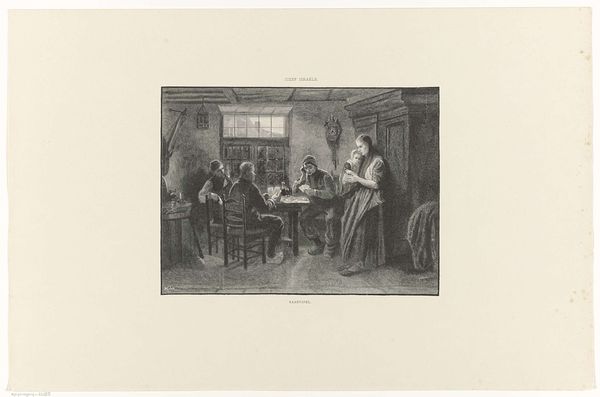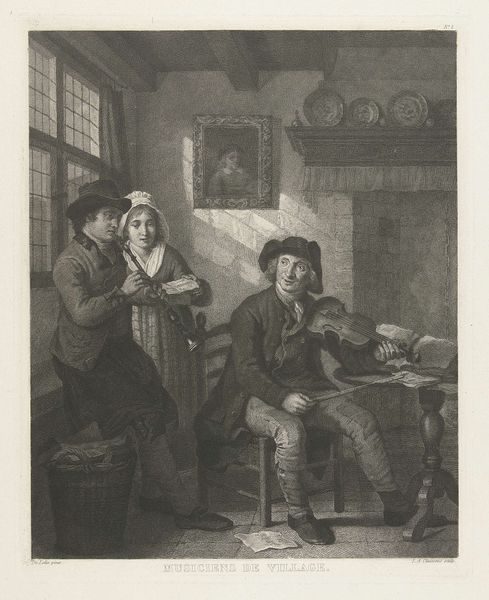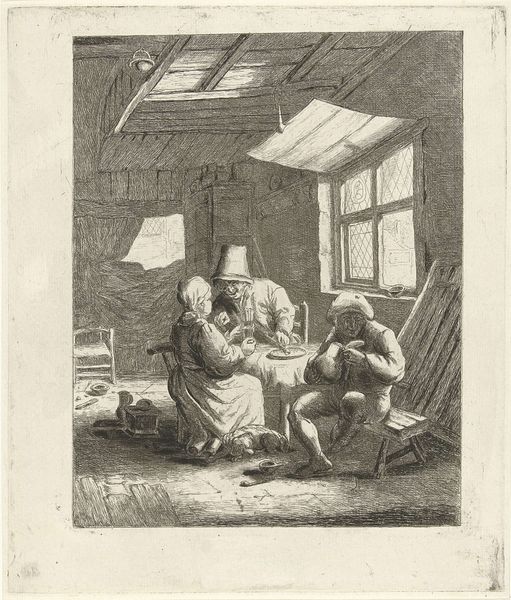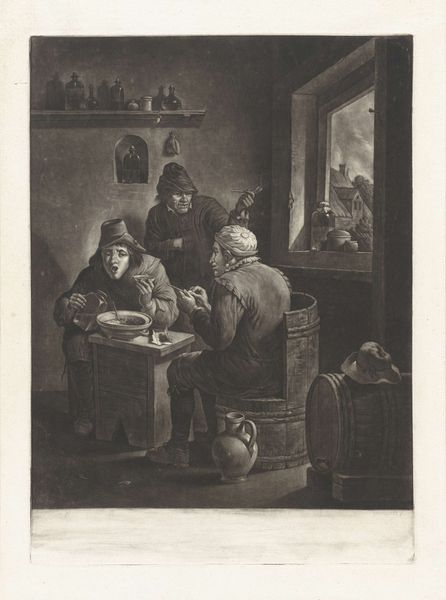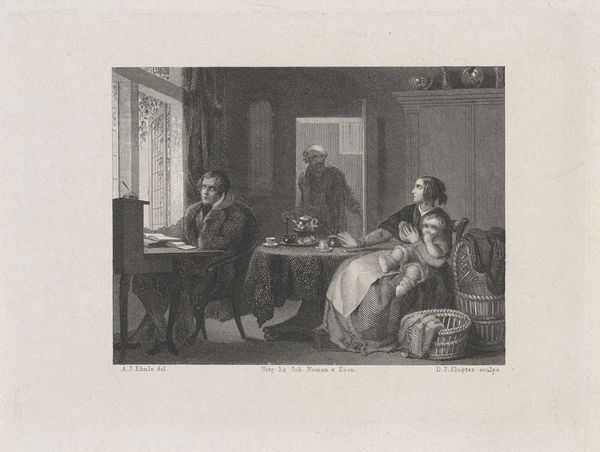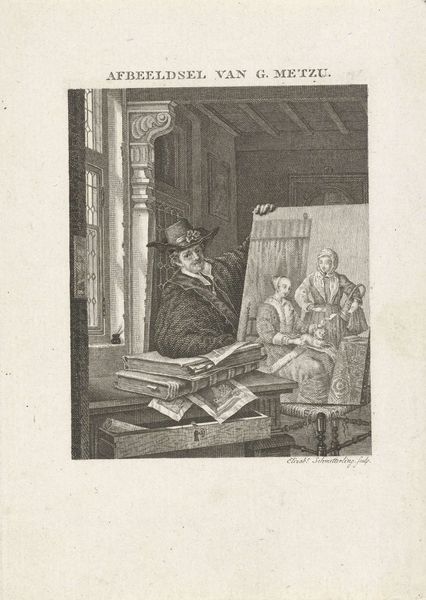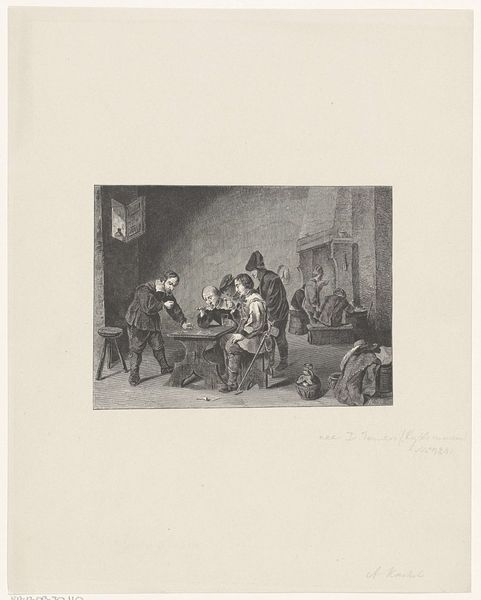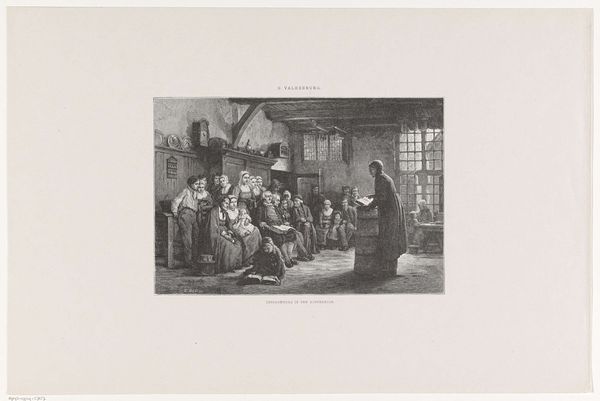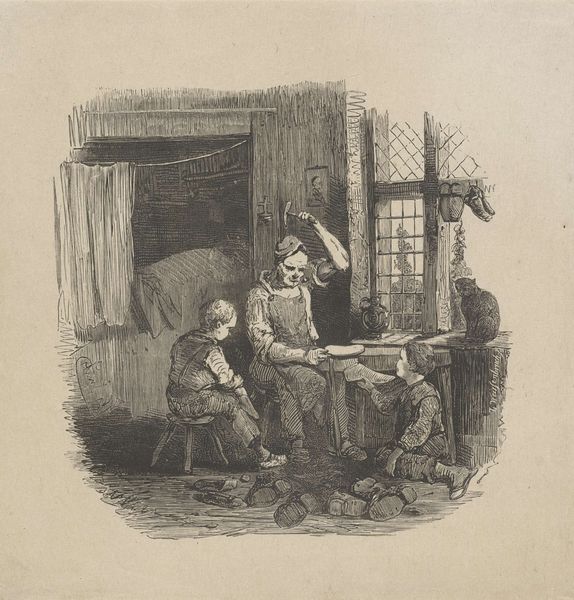
print, engraving
#
portrait
#
print photography
# print
#
group-portraits
#
genre-painting
#
engraving
#
realism
Dimensions: height 277 mm, width 211 mm
Copyright: Rijks Museum: Open Domain
Editor: This is "Kleermakerswerkplaats," or "Tailor's Workshop," created by Christiaan Lodewijk van Kesteren in 1861. It's an engraving, so a print. It feels so intimate, like we're peering into a private moment. What symbols or hidden meanings do you find in this seemingly simple scene? Curator: This image pulses with the silent language of labor and domesticity. Notice how the light from the window bathes the room, not just illuminating the scene but almost sanctifying the work itself. In Dutch Golden Age painting, light was often used as a metaphor for divine presence or moral virtue. Do you see echoes of that here, perhaps repurposed for a modern, secular age? Editor: That's fascinating! The light definitely draws my eye to the figures at work, making them the focus. I also notice that one person isn’t sewing but seems to be sitting, watching. Is this common? Curator: Indeed. That figure could represent an apprentice or perhaps a child observing and learning the trade. The act of passing down skills, the continuity of labor, that's a powerful symbol here. Think about how these skills were, at the time, the lifeblood of a community, representing not just a profession, but also social stability, familial legacy, and personal identity. Editor: I never would have thought of it that way! It seemed so… ordinary at first glance. Curator: It's in the ordinary that the deepest meanings often reside. Consider the tools scattered on the floor; are they just objects, or do they speak to a certain level of domesticity? Do these implements transform the people that are using them, as they themselves transform their source materials? Think about it and tell me what you come up with! Editor: This has opened my eyes. I'll never look at a genre scene the same way again. Thanks! Curator: My pleasure! Each piece holds a universe of meaning, just waiting to be uncovered.
Comments
No comments
Be the first to comment and join the conversation on the ultimate creative platform.
